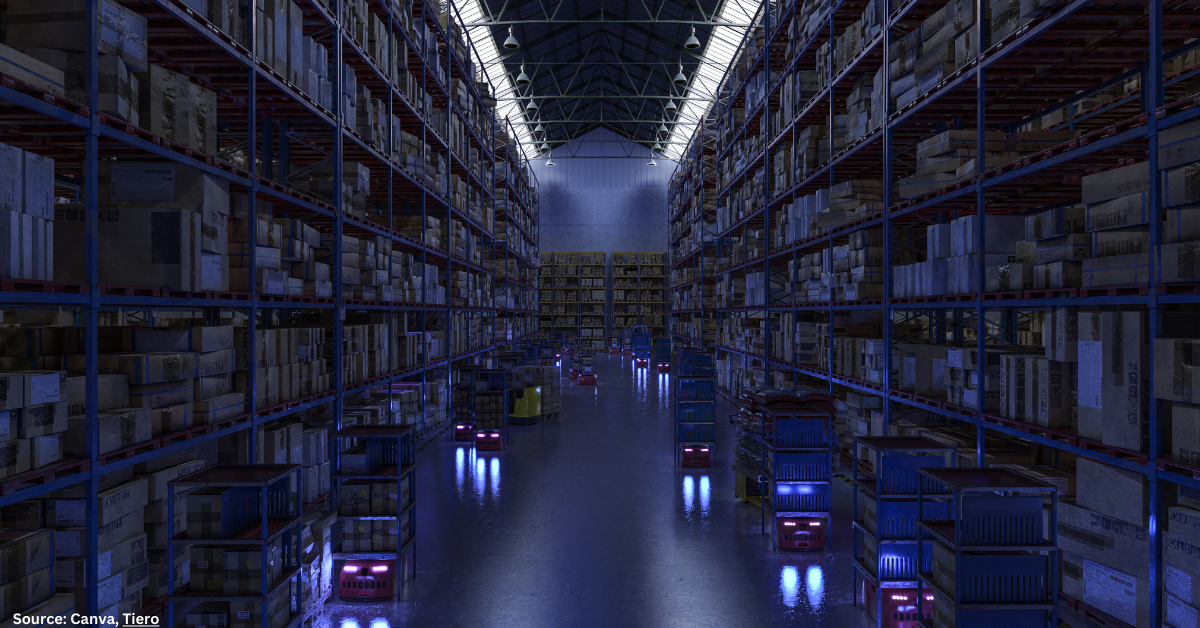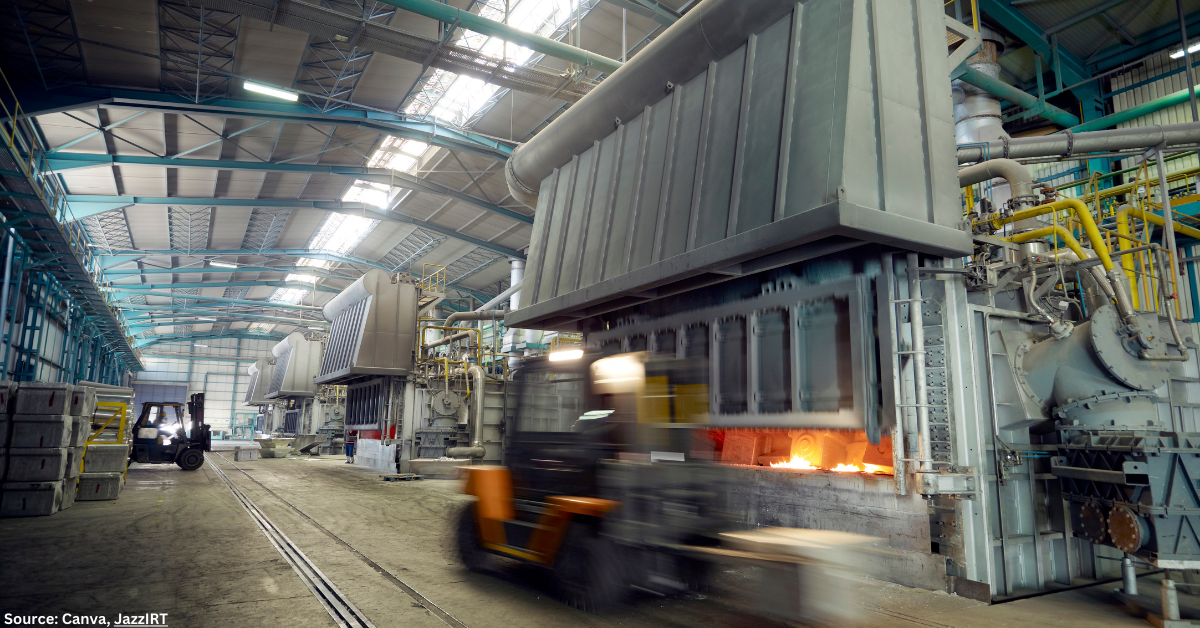ty of inventory, in-stock, on its way, visibility of in-bound freight, visibility of shipping capacity. That’s been exposed as the biggest issue, I think, in our supply chains over the last six months or so because without that visibility we’re working blind.
“Visibility has always been important. In the volatile market we’ve got now, it’s even more important.”
I was talking to a healthcare products company yesterday—they manufacture a range of personal care products. Through lack of visibility of customer orders, work in progress stock, raw materials, they are losing a lot of money because they were missing out on orders. Visibility has always been important. In the volatile market we’ve got now, it’s even more important.
Aside from visibility, there’s also been talks on diversification of supply chains. There are several countries right now that are moving towards independence, specifically from China. As a supply chain professional from Australia, how fast do you think this can be achieved?
I think it’ll be really slow and I’m not sure that a lot of companies are bringing manufacturing onshore yet. I’m not really seeing a lot of evidence of it. I think it really depends on the size and scale of the business, so for smaller businesses, it’s easier.
If I’m buying $10 million of product a year from China, it’s not a huge volume. It’s relatively easy to start switching suppliers and switching countries and doing that in stages. If you’re buying $10 billion worth of product from China, maybe from three or four major factories, [then] that is really hard to change. It’s that old analogy…it’s like trying to change the direction of an oil tanker: it’s really really slow.
Also, if you’re talking about huge volumes like that, very large companies, retailers, [they] are working on really thin margins. If I’m going to move $10 billion of supply from China, let’s say to India, and the price of my products is going to go up 2%, that’s going to kill me. So, it’s still very price-driven and I think that will slow down any change.
What I think a lot of companies will do is they’ll kind of hedge their bets where they can get part of a range supply from somewhere else, they might do that, where they can get dual supply, they might do some of that, and I think over the next couple of years we’ll see a gradual testing of different supply markets. There’s well-established markets like India and Bangladesh, particularly for garments, Thailand and Vietnam for tech [and] automotive products.
We’re seeing new markets emerge as well—people are now talking about Egypt as being a great source for garments. So, I think it’s going to be a gradual change.
“It’s about the vulnerability of having a single source of supply when there is a global disruption.”
What will the impact be on China? A gradual decline in business, I think. And of course, we’re seeing the trade wars happening now, that’s not going to get any better. Most people start switching sourcing points. We’re getting hit with huge tariffs right across the board for Australian products being exported to China.
There’s going to be this tit-for-tat going on for a while because obviously China’s trying to protect their markets but…it would be very easy to point the finger, as some leaders around the world do, and say “Hey, China this is all your fault! We’re not going to buy your products anymore.” It’s not about that. It could’ve been any country. It’s about the vulnerability of having a single source of supply when there is a global disruption.
It could’ve been India, it could’ve been Bangladesh, it could’ve been anybody—it’s the fact that so many companies have all their eggs in the China basket [that] they’ve realised they can’t afford to do that anymore. It’s not that we don’t like China! They produce great products at a great price but we got to have a Plan B.
What are some of the biggest challenges that your clients have been coming to you recently?
It’s interesting…it’s two ends of the spectrum. There’s probably some clients we haven’t heard from for a while ‘cause they’re struggling, really struggling, and they’re just trying to survive. Most of our clients are trying to deal with huge demand growth, that’s their problem. We’ve seen that across many different sectors—the DIY sector, everybody’s working from home doing maintenance on their house.
In the first few months of the pandemic, I was talking to a big office products retailer [and] they were almost out of stock of core products like printers because everybody was now working from home. They’re ordering a desk and a printer, and a screen. You couldn’t get a webcam for months because it’s not just the people working from home, it’s all the kids too doing their schooling.
“The biggest problem that our clients have been having is dealing with that huge uptake in demand and that translates all the way through the supply chain.”
Right across the board, there has been a massive increase in demand across many, many different industries. It’s hard to think of some that have taken a hit but probably fashion retail, where a lot of that’s going online, a lot of the bricks and mortar function retail has obviously been hit badly. There’s some really strange industry sectors…home exercise equipment has gone through the roof.
So, the biggest problem that our clients have been having is dealing with that huge uptake in demand and that translates all the way through the supply chain. So, how do they manage the inventory better to make sure that they maintain service levels? How do we improve the warehouse processes because we have so much volume of product coming through? How do we manage out freight when there is so much freight moving around that people are competing for transport assets?
And then the demand planning, the sourcing…I think one of the biggest challenges has been demand planning. You’re almost needed across the ball to do that over the last 6 months because the last 6 months has been a great advert for the Beer Game. That simulation game? (laughs) It’s a fantastic simulation game that’s been around for years which teaches people the impact of not doing a demand planning very well, and the essence of the game is that a small change in customer demand gets amplified all through the supply chain until factories start running out of stock and then the rest of it.
We use this beer game to teach people about sales and operations planning. And the way that we play it, very simply, is that you have people playing different stations through the game, the people right at the front who are the retailers…all we do is we change the weekly demand from four products to 6. Suddenly it jumps up to six, 50% increase, and people start to panic and they start ordering more on the warehouse, and the warehouse orders more on the factory.
It’s a really interesting illustration of how small change in demand can completely wreck the supply chain. Well, what we saw over the last few months was sometimes 10 times that. And so how the heck do you manage that demand to make sure you are in stock? For a couple of months there companies just couldn’t.
Have we seen any hints of these problems prior the pandemic?
If anybody says they saw it coming (laughs), I’d question that. I think we have had disruptions in the past, sure. There’s been economic disruptions, climate disruptions, political disruptions, but they haven’t been as big as this and they haven’t necessarily been on a global scale. I don’t think anyone could have envisaged something like this happening and hopefully it’s a once-in-a-thousand-year kind of impact.
But I think we saw the significant disruption and damage in our supply chains because our supply chains had just become too fragile, all driven by the consumers wanting lower prices, all the companies chasing lower production costs, lower supply chain costs—everything was running almost on a knife edge. And when you are hit with that massive disruption of demand or supply, the supply chains just couldn’t cope.
Well, it’s not fair to say that actually because most did cope but through a lot of trauma [like] people working around the clock, particularly in those early weeks. People working around the clock really being innovative…I think it was interesting that suddenly supply chain became very hands-on and operational. It was almost like running a logistics in the military there for a few weeks, “Okay that’s the theory but we’ve gotta get the stuff to the people that need it.” It was almost at-any-cost kind of thing.
What’s the first step that you’d recommend for an organisation or firm who would want to assess or identify the vulnerabilities in their supply chains and begin fixing them?
I don’t think it’s rocket science. I think it just need a logical process. Basically, to—this is kind of a whiteboard exercise—map out your supply chain, map out the main product movements, the main information interfaces, and then identify what are the known risks. So, known risks would be [for example] a factory is taken out for some reason, we can’t ship by a particular mode, those sorts of things.
And then I think what we need to start doing is imagining the unknown risks, like “What’s the worse that could happen? What are we going to do in that situation?”
“When you assess these risks and if you look at some of the measures that you’re going to take to mitigate those risks, practice them.”
And then it’s like any risk management, go through and prioritise those: what’s going to be the financial impact [and] the service impact of these things? Pick the real high priority ones and then start building a Plan B for those eventualities. What might that be in the future?
Hopefully, it’s not going to be as dramatic as this but I think one of the biggest challenges probably that we faced recently is the supply disruption. So, in terms of risk management, that’s probably something I would put as a very high priority.
What are we going to do? Are we going to diversify supply or are we going to have multiple supply chain relationships? And the thing is, not to have a theoretical plan, either. When you assess these risks and if you look at some of the measures that you’re going to take to mitigate those risks, practice them. I mean, I come from a military background, my first 20 years was in the military. I spent 20 years training for stuff that might never happen but when it did happen, you knew exactly what to do and you just did it. So, we shouldn’t underestimate that in business as well.
What are the primary risks? Okay, if it’s going to be supplier disruption, let’s have those secondary suppliers ready, let’s do some practise orders, let’s get some product from them, let’s check the communication channels, let’s do some dumb runs. You need to be doing that sort of thing so that it isn’t panic when something happens; you just pull out plan B and say “That’s fine, we practised this, let’s get on with it.”
For small businesses that may be suddenly facing the prospect where large companies say that “We’re not going to rely on you anymore”, what can those small businesses and suppliers be doing to mitigate the disadvantages brought by this?
In terms of risk mitigation, start thinking about that now, so that’s a potential risk. You know the biggest risk in any business is the number 1: it’s having one product, one service, one customer. And it’s something in my own business that we monitor very carefully. It’s wonderful to have a huge customer that’s bringing in millions of dollars to your business. But if that one customer is representing 90% of your busines, that is a huge risk.
“You need to be servicing different customers, different markets, maybe different products.”
I think for small businesses that are too reliant on a very small number of customers, you’ve got to start diversifying. You need to be servicing different customers, different markets, maybe different products. I suppose it’s the military training but I’ve always been like that in my own business. I diversify to the extent that I run five businesses, so I’m not reliant on one.
Also, within those businesses, we look at what’s our exposure…we would never ever have a business where more than, let’s say 30% of our sales was related to one customer. I think that’s absolutely the maximum you want to go to.
The same with products. You don’t want to have more than maybe 30% of your sales coming from one product ‘cause guess what? Someone is going to come in and disrupt that product range and suddenly [for example] we were selling pencils, now nobody buys pencils anymore for whatever reason. So, diversification of clients, of markets and products is really important.
Redefining Supply Chain Resilience
As we move towards what is hopefully the end of the pandemic, organisations must begin embracing visibility and diversification. While disruptions in supply chains are inevitable, even a large-scale one can be managed with proper contingency planning. With this newfound shift in perspective, companies need to act quickly and begin the process of redefining supply chain resilience.





























































Follow us on social media